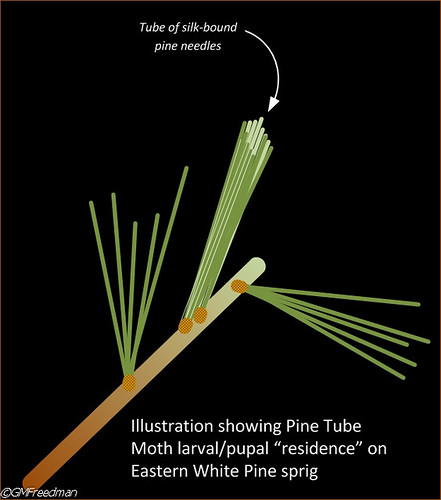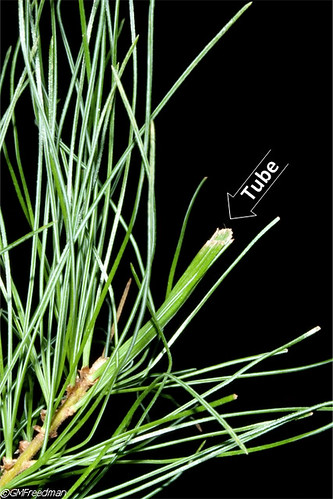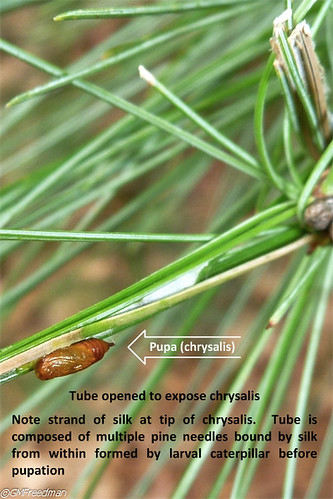Kingfisher Chatter
(a blog about Assabet River National Wildlife Refuge)
NOTE: Enter your email address above to subscribe/receive email when new Kingfisher Chatter posts are published
20 November 2013
Click on pictures which are linked to the originals on FARNWR's Flickr account
Have you heard of the Pine Tube Moth? It was a new one to me! Argyrotaenia pinatubana lives in pine trees and seems abundant in Eastern White Pine on the Refuge and well beyond too. At this time of the year the Pine Tube Moth larva has bundled up to about 20 live pine needles with a silk it produces. The bundle is fashioned into a tube; the binding silk on the inside of the tube. The greenish-yellow larva (caterpillar) will eat some of the pine needles composing the tube from the tips down. If too much is eaten it will build another tube. Here is an illustration of a typical tube residence.
Below is is an actual Pine Tube Moth tube photographed on the Refuge. Difficult to see unless one is looking for it. Once you know what to look for you will find tubes are abundant.
As the weather starts to cool, the larva pupates in a chrysalis as is typical for moths and butterflies. The moth will emerge in the spring. Hopefully next spring there will be a moth picture to post. Here is a photo of the chrysalis from an opened tube
According to several sources, the Pine Tube Moth is a minor pest only effecting aesthetics as the tube needles, especially the tips, will generally brown. It is found from Canada to Florida and west into Minnesota and Wisconsin. Jack Pine Tube Moth is a similar species found in our western states. In some areas two generations may occur in one season.
I'll be looking for caterpillars in the early summer and again in the fall and moths also. Yum! (Yes. Belted Kingfisher will eat insects too)
Hope to see you at my Refuge.
- The Kingfisher -




No comments:
Post a Comment